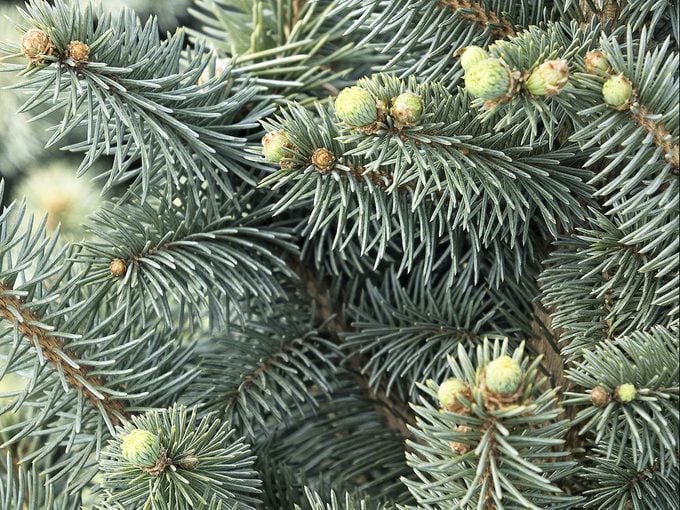Grow a Dwarf Colorado Blue Spruce for Evergreen Beauty
Updated: Oct. 24, 2023

No space for a spruce? Consider adding a dwarf Colorado blue spruce for the look of this delightful tree without the imposing size.
Benefits of Growing a Dwarf Colorado Blue Spruce

When space is limited but you need a tree, give a compact evergreen—such as Monrovia’s dwarf JeanGenie Colorado Blue Spruce—a try. Use it as a specimen tree, or plant a few together to create a natural privacy fence to offer gorgeous color and texture year-round.
Dwarf Colorado blue spruce trees are an ideal choice for those who want the classic look of a spruce in their yard, but don’t have the room in their backyard for a large evergreen tree. While a regular spruce can grow up to 60 feet tall and 20 to 25 feet wide, dwarf trees typically grow a fraction of that: for the Monrovia cultivar mentioned above, only 10 to 15 feet tall and 6 to 8 feet in width.
Try these small evergreen shrubs for year-round curb appeal.
For those looking to bring more feathered friends into their backyard, birds such as chickadees and finches typically snack on pinecones from spruce trees. Spruces of all sizes provide dense foliage and protection from harsh weather and predators, as well as nesting sites, for a variety of birds.
Whether full-sized or dwarf, these charming trees tolerate drought well. They survive best in well-draining and rich soil, but they’ll tolerate a variety of soil types. Plant the tree in spring or fall for best results. The biggest caution gardeners and homeowners should take is ensuring their yard’s climate is conducive to this species. Blue spruce trees are extremely cold-hardy, but they don’t tolerate extreme heat.
Add other smaller evergreen trees to your landscape with the top 10 dwarf conifers.
Care and Growing Tips
- Botanical name: Picea pungens ‘Moneva’
- Common name: JeanGenie Colorado blue spruce
- Zones: 2 to 8
- Attracts: Birds
- Light needs: Full to partial sun
- Size: 10 to 15 feet tall and 6 to 8 feet wide
- Grown for: Blue-green foliage and attractive pyramid form.
- Foliage: Slow-growing branches provide stiff clusters of hearty, attractive needles
- Watering needs: Water deeply the first few seasons to establish healthy roots
Next, check out more of the best types of conifer trees for your landscape.




















